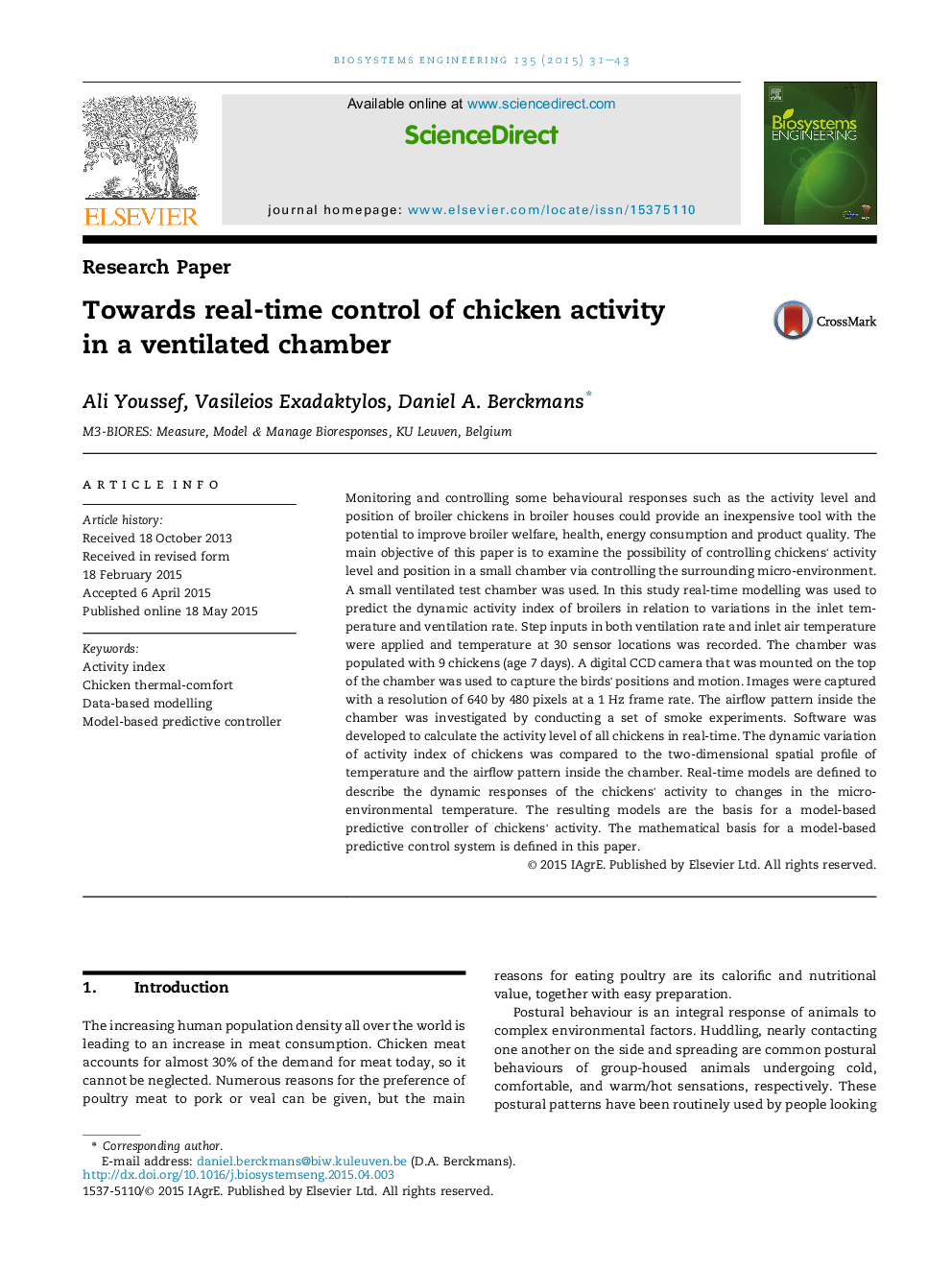| Article ID | Journal | Published Year | Pages | File Type |
|---|---|---|---|---|
| 1710989 | Biosystems Engineering | 2015 | 13 Pages |
•Monitoring and controlling broiler behaviour could improve welfare and production.•Controlling activity requires prediction of animal responses to stimuli.•Real-time dynamic modelling of chickens' behavioural responses is presented.•A model-based predictive controller for chicken activity is outlined.
Monitoring and controlling some behavioural responses such as the activity level and position of broiler chickens in broiler houses could provide an inexpensive tool with the potential to improve broiler welfare, health, energy consumption and product quality. The main objective of this paper is to examine the possibility of controlling chickens' activity level and position in a small chamber via controlling the surrounding micro-environment. A small ventilated test chamber was used. In this study real-time modelling was used to predict the dynamic activity index of broilers in relation to variations in the inlet temperature and ventilation rate. Step inputs in both ventilation rate and inlet air temperature were applied and temperature at 30 sensor locations was recorded. The chamber was populated with 9 chickens (age 7 days). A digital CCD camera that was mounted on the top of the chamber was used to capture the birds' positions and motion. Images were captured with a resolution of 640 by 480 pixels at a 1 Hz frame rate. The airflow pattern inside the chamber was investigated by conducting a set of smoke experiments. Software was developed to calculate the activity level of all chickens in real-time. The dynamic variation of activity index of chickens was compared to the two-dimensional spatial profile of temperature and the airflow pattern inside the chamber. Real-time models are defined to describe the dynamic responses of the chickens' activity to changes in the micro-environmental temperature. The resulting models are the basis for a model-based predictive controller of chickens' activity. The mathematical basis for a model-based predictive control system is defined in this paper.
